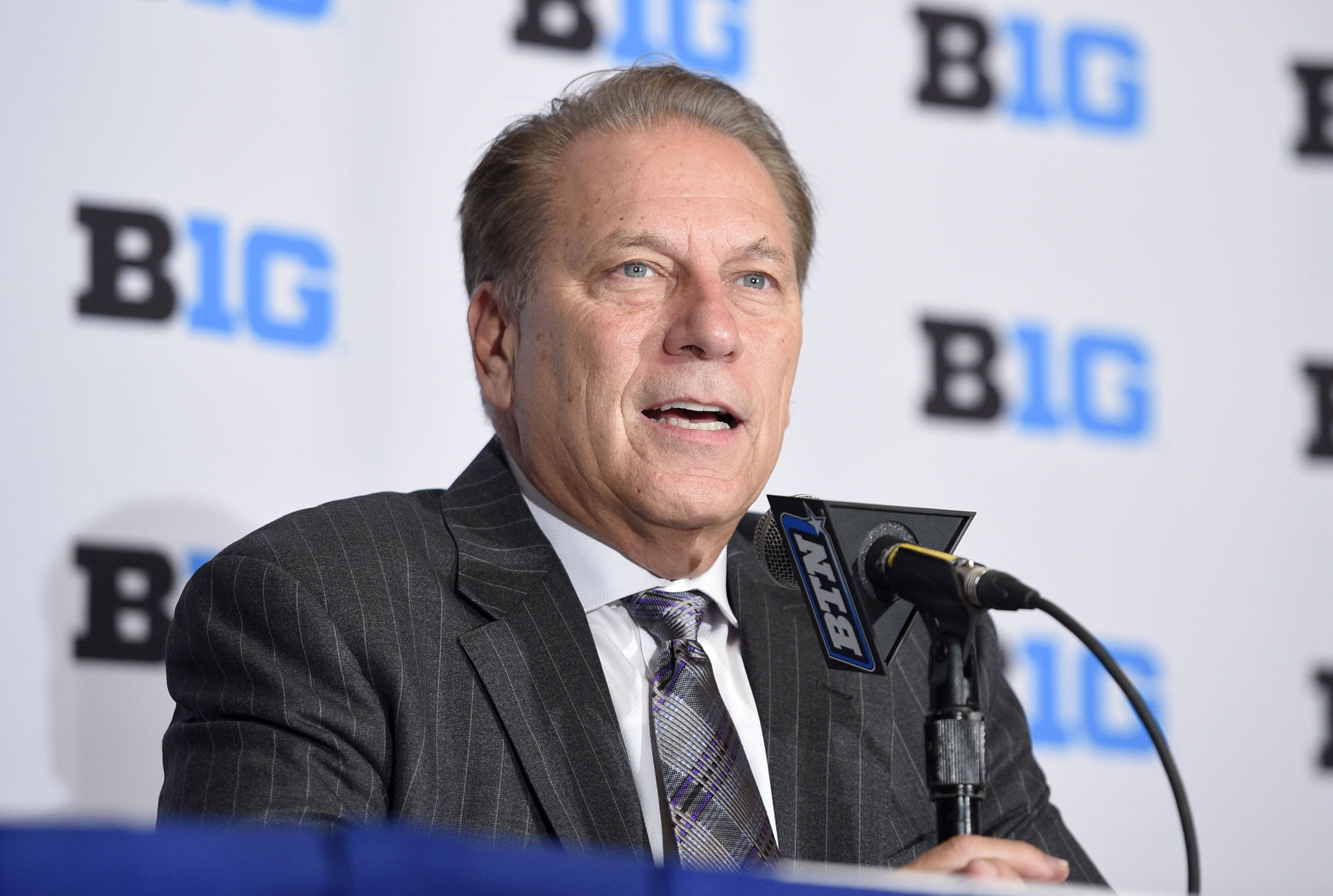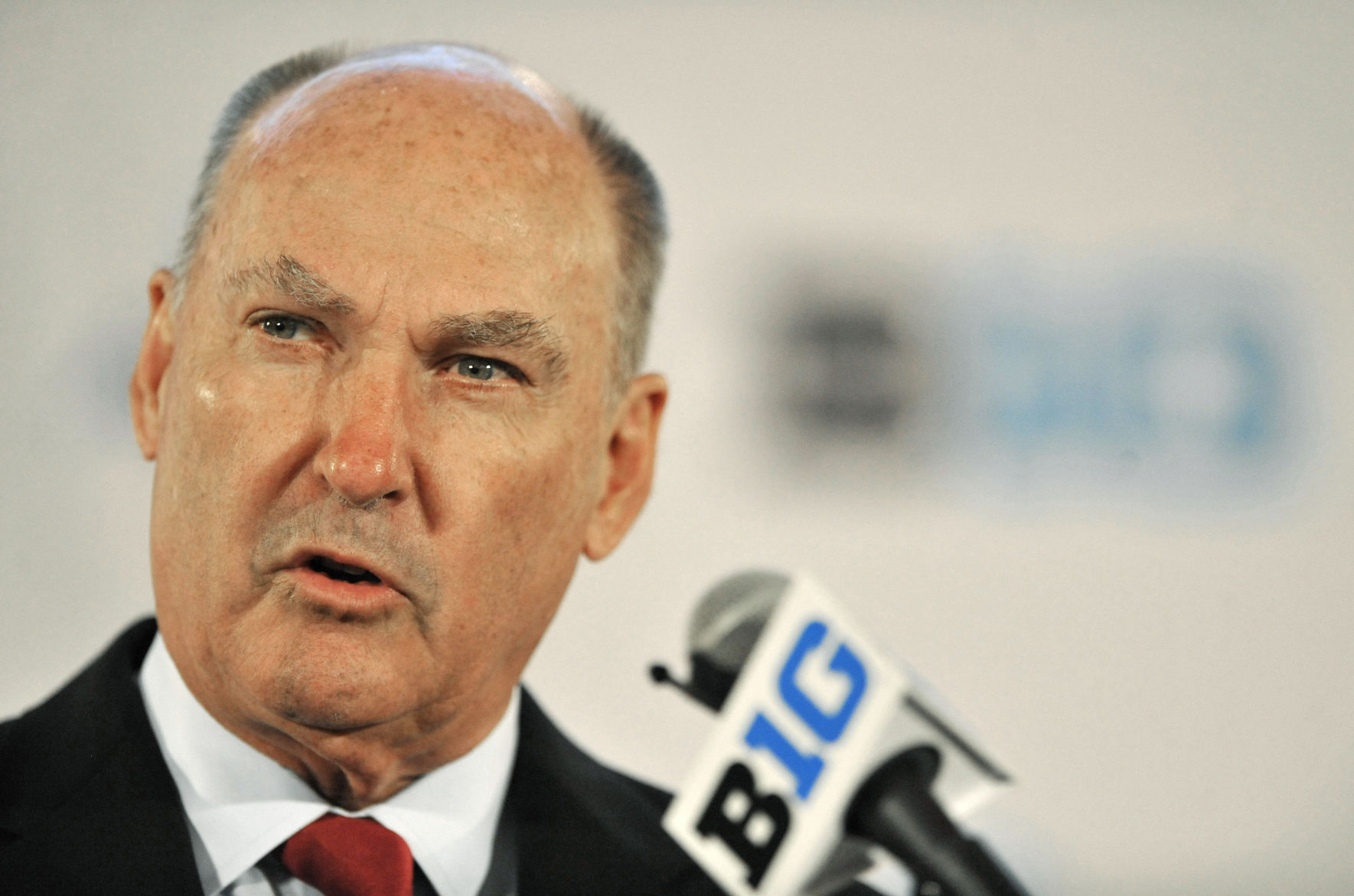NEW YORK (AP) — Big Ten basketball came to the Big Apple on Thursday for media day and a look at Madison Square Garden, where the conference will hold its tournament in March. “This is the mecca of basketball,” Michigan
NEW YORK (AP) — Big Ten basketball came to the Big Apple on Thursday for media day and a look at Madison Square Garden, where the conference will hold its tournament in March.
“This is the mecca of basketball,” Michigan State coach Tom Izzo said. “It always has been. And I think it always will be.”
The Big Ten will make its conference tournament debut at the Garden. The championship game, traditionally played on selection Sunday, will be played a week earlier on March 4. The Big East already had MSG booked for the following week.
“It’s made the schedule a little bit funky, a little bit different. But that’s OK,” Minnesota coach Richard Pitino said. “Anybody who’s played in this building knows the opportunity that it presents and how special it is to play here. And sometimes you got to sacrifice a little bit.”
The shift means playing conference games in December, which is about to become the norm. The Big Ten announced Thursday it is increasing league schedules to 20 games in men’s basketball and 18 in women’s basketball, starting in the 2018-19 season.
Big Ten men’s teams currently play 18 conference games and the women’s teams play 16.
“The idea behind the 20-game schedule is to hopefully get more teams in the NCAA Tournament,” Maryland coach Mark Turgeon said. “Data showed when we went from 16 to 18 we started getting more in.”
The coaches backed the expanded league schedule, but there is some concern about how it will impact nonconference games.
“We’ve got a pretty full plate, normally,” said Wisconsin coach Greg Gard, whose team typically plays in-state rival Marquette along with a preseason tournament and the ACC/Big Ten challenge. “And now you add two more conference games, obviously, Power Five games. And you have to make a decision on what you’re going to substitute out.”
Michigan State has typically packed its early season schedule with powerhouse nonconference opponents.
“You know, I had reluctance when it went to 18, to be honest with you,” Izzo said. “And then it’s kind of worked out.”
A 14-team conference was creating imbalanced schedules that could impact the conference standings.
“But I’ve also been a big fan of the truest champion you could have, and I think that when you’re only playing 16 and an 18, sometimes the schedule determines some of the championships over the performance on the court,” Izzo said. “This gives us the better chance to have the performance on the court do it.”
Under the new format, men’s teams will play seven opponents twice and six teams once, splitting the single matchups evenly between home and away. In-state rivalries Illinois-Northwestern, Michigan-Michigan State and Indiana-Purdue will be played twice annually, and regional rivalries will be emphasized when determining home-and-home opponents.
Michigan and Michigan State only play once this season.
“And there was no doubt, as Tom (Izzo) and I talked about this, that we should be playing twice every year,” Michigan coach John Beilein said.
The women’s schedule will include five opponents playing twice, eight once and also emphasize state and regional rivalries.
As for moving the tournament out of the Midwest to the East Coast, Commissioner Jim Delany said the goal is to bring the tournament to the Northeast corridor about 20 percent of the time. The Big Ten Tournament was played last year in Washington, D.C.
The Big Ten added Rutgers in New Jersey and Maryland in 2015, and soon after established a conference office in Manhattan. As Delany put it, the Big Ten wants to live in this area, not just visit.
But the extra time off between the end of the Big Ten Tournament and the start of the NCAAs could present a challenge for teams that make the field of 68.
Turgeon, who previously coached at Wichita State in the Missouri Valley, said he thought the time off helped the Shockers prepare for the NCAA Tournament.
“We were able to get fresh, put in a lot of new plays,” he said. “We could disguise a few things, steal a few buckets, so to speak.”
The Big Ten doesn’t have a preseason poll for order of finish in the conference, but it does choose a preseason player of the year that’s voted by the media. Michigan State sophomore Miles Bridges was the easy pick.
Joining Bridges on the preseason all-Big Ten team were: Northwestern’s Bryant McIntosh and Scottie Lindsey; Wisconsin’s Ethan Happ; Maryland’s Justin Jackson; Michigan’s Moritz Wagner; Michigan State’s Nick Ward; Purdue’s Vincent Edwards; and Minnesota’s Amir Coffey and Nate Mason.



